#Tokyo Debugger
Explore tagged Tumblr posts
Text
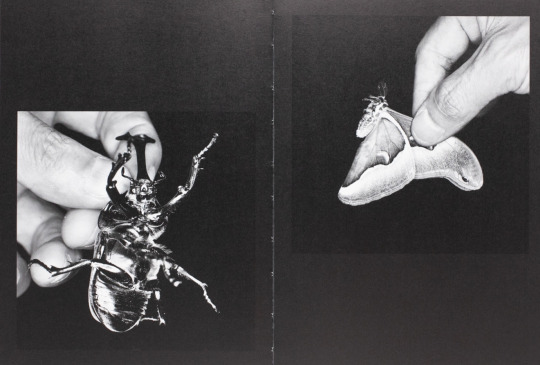
Shinya Arimoto: Tokyo Debugger (2019)
#Shinya Arimoto#Tokyo Debugger#photography#photobook#japan#black and white#bugs#moths#wings#nature#animals#2019
2K notes
·
View notes
Text


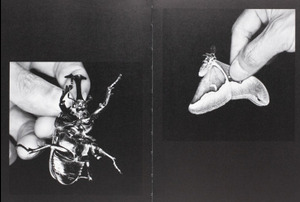


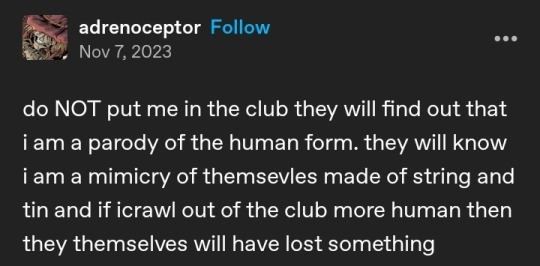










Belonging, Being, and Bugs, a Rolan Deep webweave
JRWI Blood in the Bayou, Epsiode 3 // Quora response // Shinya Arimoto: Tokyo Debugger (2019) // The Love Song of J Alfred Prufrock, T. S Elliot // Rolan Deep by @s0up1ta // Tumblr post by @/adrenoceptor // JRWI Blood in the Bayou, Episode 3 // Unknown // Richard Silken, A Portrait of Fryderyk // The Illawarra Flame // The Magnus Archives, Episode 78, Cicada Life Cycle, Purdue University // Grandmas House, Body // The Metamorphosis, Franz Kafka // Marlena, Julia Bunton // JRWI Blood in the Bayou, Episode 4
#sparrow spins#jrwi bitb#rolan deep#blood in the bayou#bitb#cicadas#insects#cicada#beetles#cw insects#web weaves#web weave#web weaving#on being human#on self#Special thanks to s0up1ta and the rolan deep quotebot on twitter
335 notes
·
View notes
Note
hyperpop with a sort of racer theme if that makes sense? like car racing with bright colors and an energetic vibe
you gaze into the clear, blue water...

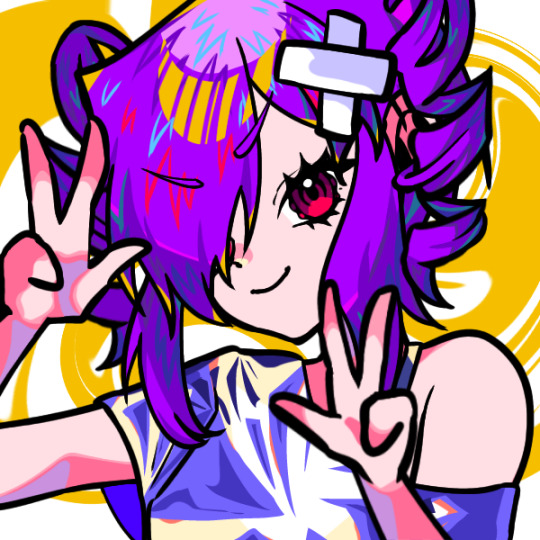


CLEM / KOVER / SYBIL / ASTRO
MOOD BOOSTER, DEBUGGER
___________________________
🏎️ - she/xe, suggested neos are race/racer, sped/speed, roller/coaster, skate/skater, bang/bangs, sugar/sugary, run/runs, 🛼/🛼s, 🎉/🎉s
___________________________
👾 - genderfluid fem presenting, bisexual fem leaning, xenohoarder+spacekin
🍇 - cosmainull, pixelspacegender , confetticatgender , sprinkleic
___________________________
a genderfluid fem presenting teen (16) with purple twin tails with bangs covering part of xes face, and red eyes. xe loves dressing up in drag-racing/decora like fits and enjoys expressing speedselfs outgoing and energetic personality through xems outfits ....
ENTP
(( LIKES : rollerskating , theme parks , decora fashion , sugary and spicy foods , various sports like soccer , working out , hyper pop music , vocaloid , making friends
(( DISLIKES : rude people , long lines , people who litter , public transportation , sweet savory and sticky foods , reptiles , insects
(( MUSIC : Enjoys vocaloid songs such as Magnet , Tokyo Teddy Bear , Triple Baka , and Karma . Also enjoys Hyperpop artists such as FoodHouse and 100 Gecs!
(( GUILTY PLEASURE : Those "which _____ are you quizzes?
(( GENERAL PERSONALITY : Super energetic and social, type of extrovert to kinda just adopt random people as friends. People are scared of xe because of her loud personality and strength but xe wouldn't hurt a fly! Unless that fly hurt a friend of xes...
(( RANDOM : xes favorite vocaloid is Teto, but if she doesn't count then it's Yumemi Nemu. loves video essays and character themed playlists on youtube!
thank you for requesting...

#endo safe#pro endo#build a system#build an alter#build a headmate#created system#alter packs#alter pack#headmate pack#willogenic#altpackgenic
12 notes
·
View notes
Text
Smart Protector cracking in doua algoritme diferite cu AoRE Debugger
Smart Protector se pare ca antivirusul fals vrea alte ideei pentru activare.De la poze cu dragoni si tapete cu anime si orase Tokyo la poza cu Kiki pisica a terapeutei Salmei , deci mersi pentru poza pentru fundal , ありがとう。 Antivirusul fals se poate reinstala indiferent daca il stergi sau dezinstalezi el se reinstaleaza cu o abilitate care nu poate fi oprita pana nu stergem in safe mode sau…

View On WordPress
0 notes
Photo



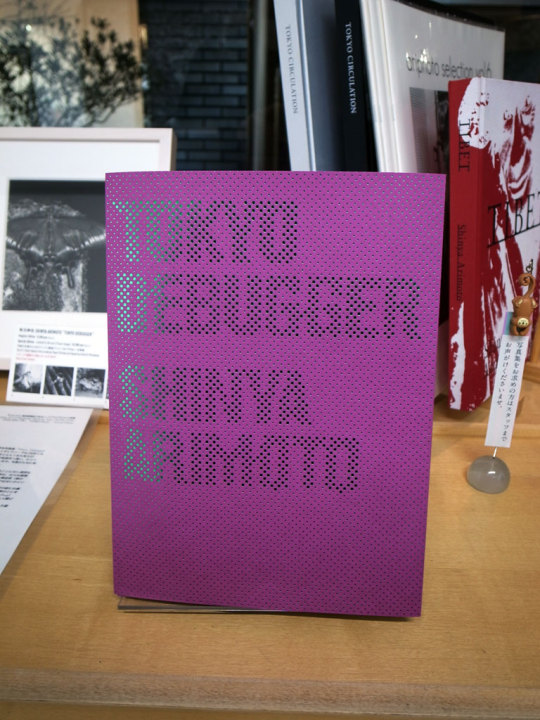
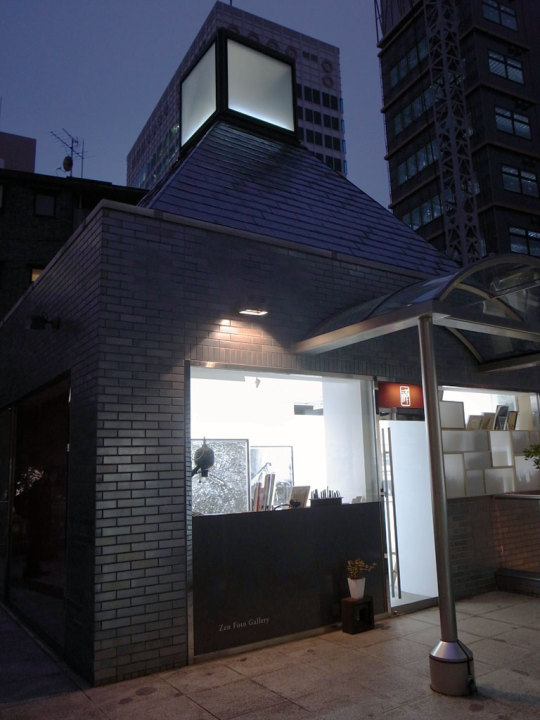
Seen: Tokyo Debugger
Who: Shinya Arimoto 有元伸也 website
Where: Zen Foto Gallery, Roppongi, Tokyo (map)
When: January 14 - February 20, 2021 (Open 12-7pm. Closed Sun. & Mon.)
To me Arimoto’s incredible Tokyo Debugger series of insects and creatures found in Tokyo’s western wooded hills is “new” but I realized I’ve been sharing images of it since October 2013 ( and in October 2014 , September 2015, and July 2020).
This 2021 show at Zen Foto is commerates their publication of his Tokyo Debugger book (Available at shashasha). The gallery’s website provides a statement by Arimoto on this series- I think it conveys that Japanese perspective towards nature- one that’s a mixture of animsim and realism.
- - -
“Many people have questioned me why I would create a group of work focused on bugs, since I have mainly focused on my work on portraits of human beings for more than 20 years. However, I have previously written in the statement of previous work “Tokyo Circulation” that “the dense sprawl of Tokyo is an ecosystem with magnificent circulation”.
That concept originated from the idea that If honeycombs, a meticulously calculated structure created by bees as a living creature are a part of nature, then cities created by the living creature called human beings should also be a part of nature. I once said that my previous work and this work “belong to the different sides of the same coin”, but for example, just as a piece of blank paper has neither a front or a back, the human world and the bug world are also inseparable. I call them “mushi senpai” (“bug senior”) with all my respect as those little ones have been living on this planet since the dawn of time.
Also, I named this work “Tokyo Debugger” for two reasons, one with the simple meaning of “searching for bugs in Tokyo” and the other as a metaphor, questioning whether “debugging (removing)” in the history of the earth would happen to the bugs or to the human beings. Perhaps the human world is insignificant compared to the history of the bug seniors, and to them we may be an ephemeral existence that suddenly appears and quietly disappears in their world.”
——Shinya Arimoto
50 notes
·
View notes
Text
Analysis Asks Masterlist
Yandere Scenarios
Capable MC
Reverse Harem Yanderes
Opposing Fetishes
Yandere FairyTales
Yandere Office
Catfishing a Yandere
Teacher/Instructor Yandere
Villains as Darlings
Analysis Asks
Non-Lethal Obsessive Yandere
Yanderes that don’t have s/os
Clarification about my Fall to Lovesickness Analysis
Triggering a Yandere to Falling Madly in Love
Don’t Kill Your S/O
Brains & Brawn x x
Chaotic Neutral Yandere & Chaotic Good MC
Cliche MC Traits
Suicidal/Depressed s/o
Purposefully Made Yandere
When killing an s/o is okay
Stronger s/o than the yandere
Physically Hurting/Killing the S/O
Sadistic Yanderes
Yanderes and Yangires
Clarification in my Yangires Analysis
Yandere and Yangire Hybrids
Yanderes and Big brothers
Resentments with Yanderes
Platonic Yanderes
What kind of yanderes would you like to see?
Ableism and Yanderes
What kind of genres would you like yanderes to be in?
Yandere have another Yandere
Yandere RPG
‘Actual’ Yandere x
Zodiac Yandere
DNIs and Yanderes
YBF Analysis
More Platonic Yanderes
Writing "Fresh" Yanderes
Tips for writing a Male Yandere
Yandere Analysis/Writing Resources
What qualifies as a yandere?
Yandere Falling in Love a Second Time
Specific Yandere Types
Yandere Cheaters
Yanderes in Children Media
Analysis Based on Media
Worldend: Debugger
Amnesia Toma
One Eyed Ripper
Fairy Tales and Hurting the s/o
Recognizing Yanderes in Songs
340 Days
Hidden in Plain Sight
An Uncomfortable Truth (Platonic Vs Romantic)
Warehouse
Appetite x
My Deepest Secret
Red Fox
He's Harmless, I Swear!
Degrees of Lewdity
Happy Sugar Life
Boyfriend to Death Lawrence
Dangerous Fellows
Help with finding something
Finding Older Yanderes
You at First Sight
Uruwashiki Shuen
Where to read Manga x
Watashi No Himo Otoko
Love Score
Love Me Dearly
Idolatry and Bared Teeth
The Archvillain's Daugther-In-Law
OΣG!!! = Oh My God
Lovesick-boys-club
Other Normal Response
Planet Puto x x
Being excited about Shitoo’s new game
Bill Waterson
Ask Yandere Boi
RabbitParachute
Binging
Milgram x
RPG Game
Kissu from Tokyo Mew Mew
y0urb0yfriend x
Favorite Hair Colors on Yanderes
OC Related
Beta (Yandere Oc)
Genderbent Characters
I won’t let you go
Scientist’s Log #5 (500 Follower Special)
April Fools: maletsunderecafe asks
My OCs and their Pokemon Teams
145 notes
·
View notes
Text
What Law wanted to do in NINE
I made this post on reddit so i decided to share here too, i played NINE while using the Neutral English script(found on NINE’s discord) and DeepL for the other parts and the Light-Law route itself, so i apologise if something is wrong.
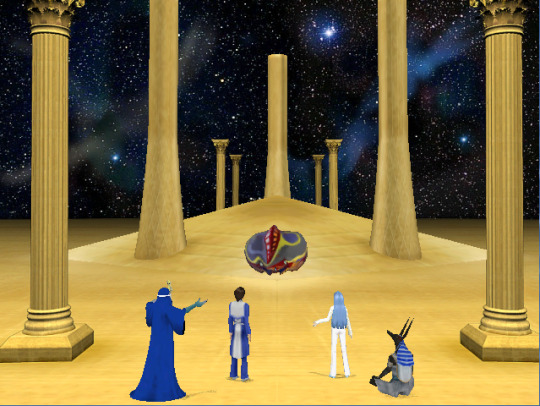
After playing a lot of megaten games i thought i got used to the methods Law used to achieve their goals, however the Neo-Messiahs methods was surely the most interesting one.
The protag(Azuma Kei) start as a normal dude, live with with his mom and sister in a underground city(game takes place 30 years after the nukes were launched at Tokyo, basically around smt 1 mid-game), also your father died or something, things seems to be so bad that most want to live in a virtual reality(created by the order of the messiah) called Idea space.
After helping dealing with an incident involving a legion demon and helping a girl called Sumire(one of the Chaos rep), Azuma becomes a debugger(basically sorta like a devil summuner) and get orders from Ferris and Tudumi in Idea space.
At some point the flood happens, it kills every human in the underground city(except Azuma and friends, who were inside a submarine called the dragon palace when that happened), the Neo-Messiah were a group of messiahs with their own ideas of salvation, tired of waiting for God to create the world they wanted they decide to create their own version of it, they built True Tokyo, seems to have been built using floating islands, revived the human race with a human factory and have set up their system of rebirth with their new created goddess Maria.
The system involves the New humans living normal lives in True Tokyo, they have peace, equality and a pretty good life there, at some point they enter idea space, a place where they can relax even more, without them knowing Life ghosts(look like humans but are not humans) consume their "Desire"(egoism) from their mind, this is done in order to "the Life Ghosts play the role of dissipating the desires of users in the Idea Space, so as to avoid the deterioration of security in the real world", basically idea space works as a place where humans get their egoism removed from them without them knowing and to make them more docile and friendly.
After 1 year passes, a religious event happens to celebrate Maria, this is the day everyone in True Tokyo die(except for Azuma and friends because they didn't die at the flood), the death is quick and painless, at the same day the human factories somewhere in True Tokyo revives the humans using the "Desire" they have been collecting for a whole year in idea space.
Thus the people in True Tokyo live in a system of death and rebirth that repeat itself every year, in this system they have peace and equality and are ensured of a good life.
There are some flaws in this system tho, for one people can still be evil in this system, Sumire(Chao Rep) parents are an example of this, and while there is some order in idea space itself crime still happens there and the fact that people can still participate in violent tournaments too, sure they have peace and a good life but evil acts can still be done even if it is just in idea space.
Second flaw is that it attract demons, accumulation of "Desire" is shown to attract demons in idea space, so the Neo-Messiah also needs the idea angels(what they use to substitute the debuggers after Mid-game) to be constantly there to defeat whatever demon appear.
But the good part in comparison to other Law routes is that the Neo-Messiahs didn't need to make any big sacrifice to create their world, everyone revived in True Tokyo is treated the same and is allowed enjoy life in peace and happiness, no big utilitarian sacrificie is made here.
Now to talk about the Light-Law route itself, in that route the protag agree to help the admnistration to continue their world, with the help of either Miranda or Mubiora(depending on what is the protag gender) they defeat Raguel, an archangel who was sent by God(Yaldabaoth) to destroy all humans and because God didn't like the idea of them creating another god to create their own lawful world, Raguel here was faking to be Naitou, a teacher in the ring of gaia, but this was all a ruse since he was just using the Ring of Gaia as a way to destroy the Neo-Messiahs.
They also defeat Sariel, an angel who was using a human disguese too, but he is the opposite of Raguel, Sariel was once a loyal servant to God but after falling from grace he swore loyalty to Lucifer, he first meet the protag at the expanse where he appears as a man named Shiki and lies that he sealed the devil in that ice wall using the power of god, his intention is to steal the "desire" stored in idea space in the "desire disks" in order to break them inside the demon world and free Lucifer from the ice wall.
So you have a Dark-Law rep posing as a Chaos rep and a Dark-Chaos rep posing as a Law rep, ironically enough Shiki is the one that helps you most of the time in the law leaning routes(until a certain poin) while Naitou is the one that helps you(until a certain point) if you decide to side with the Ring of Gaia.
After defeating them(and also beating Sumire and Baraki), Azuma and Miranda(Law rep) go to Shinjuku, they find a portal there that allows them to travel to the expanse at the exact place where Lucifer is sealed, i am pretty sure this would be the point where you break the disk to free Lucifer if this was a chaos route but i was doing a Law route so i just choose to let Lucifer stay sealed.
After returning to Idea space, Maria appears in front of them and ask for their help in killing God(Yaldabaoth) because he has been trying to sink True Tokyo to the bottom of the ocean, so both of you go to heaven and beat him, after this things can go 2 ways:
1-you kill him(Light-Law)
2-Maria seals him away(Neutral-Law)
I was doing a Light-Law route so Yaldabaoth just had to get killed, Miranda also said a pretty raw line after his defeat:
Miranda: Goodbye to that which mankind once called God.(さようならかつて人類が神と呼んだもの)
That serious remineded me of Satan, after this Azuma's life in idea space flashes before him, Maria congratulated him for saving their lawful world and for cutting ties with God.
Maria: The world of humans led by science has begun.(人ガ導イダ科学三ョル世界ガ始マリマス)
Maria: A peaceful world that lasts forever(永遠二続ク平和ナ世界)
Maria: Millennium Kingdom...(千年王国ガ...)
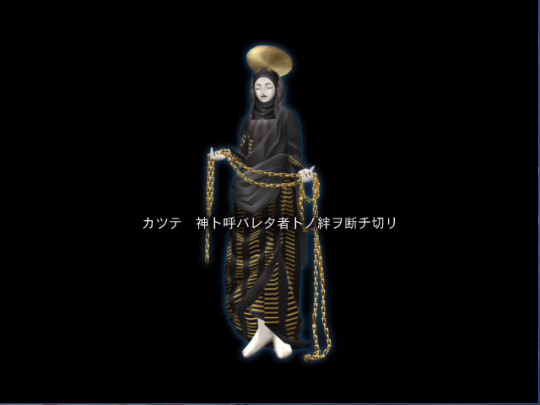
Afterwards You appear in Shinjuku, after deciding to go back to the real world, Miranda greets you there:
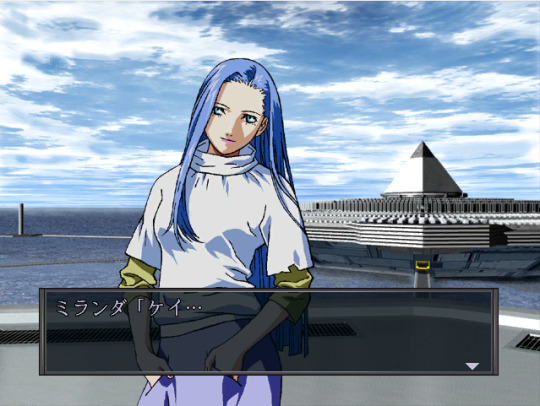
Miranda: Kei(ケイ…)
Miranda: I was struggling with the fact that I was fighting for peace...(私は平和を望むかたわら、戦い続けていたことに苦しんでいたの…)
Miranda: But I guess I won't have to worry about such contradictions from now on.(でも、これからはそんな矛盾に悩まされることもないのね。)
Miranda: ...Come on, let's go.(…さぁ、行きましょう。)
Miranda: To the world of man, created by man, for us humans...(私たち人類のために、人が造った人の世界へ…)
And then the credits rolls.
I always wonder how Gabriel and the Neo-Messiahs would react to each other, i would like to imagine they actually would eventually work together, after all Gabriel cares about Law as a principle and the Neo-Messiahs didn't trust Yaldabaoth because he was just like [Record scratch], i could see them(and possibly even Michael, Raphael, Uriel too) working together to get a Law ending similar to smt 2.
Also i have a question to anyone who also played NINE, after beating the Light-Law route i noticed Miranda mentioned this at some point:
Miranda: If Maria is destroyed, the city's population will die out in a year!(マリアを破壊されれば街の人は一年で死滅してしまうのよ!)
So did the Neutral rep(Sophia) or Chaos rep(Lucifer) did anything to fix this? Because since Maria dies in those routes that means all humans in True Tokyo(except for the protag and whoever alignment rep survived) will die after a year passes, i try asking this on NINE discord but the most i got was the fact that Sophia was expecting them to die(Sophia: "When the last spirit is dead, the
universe becomes meaningless and will disappear. You have escaped the prison of the flesh. I will
return, to the place where the new humanity should wait for me... You have saved us.") And that maybe Lucifer does something in the chaos route.
Edit: also here's the link to the Neutral-Neutral route translated script: https://twitter.com/ggnosis_/status/1057601258574426112
14 notes
·
View notes
Text


#写真展のDMを淡々とあげる
有元伸也「Tokyo Debugger」
2020.11.10-22
トーテムポールフォトギャラリー
4 notes
·
View notes
Photo

Shinya Arimoto Tokyo Debugger 2015
47 notes
·
View notes
Photo

その昔はローライ、そしてSWC使いの有元さん。接写された昆虫のポートレイトは以前ariphotoで拝見したときにハッセルでここまで寄れるの?と謎だったけど会場で謎が解けた。美しく光が回り込んだ昆虫はモノクロによりディテールが強烈に立ち上がる。ここは”山”だけどあくまでも"Tokyo"。この山の水は"新宿"に繋がっているんですよと有元さん。贅沢にも解説付きでダミーブックを全ページ拝見してしまった。完成が楽しみである。 いつ何が起きてもおかしくない世の中、ナウシカのように近未来は彼ら昆虫がDebuggerとなる日が来るのかも。 展示は8月2日まで
Tokyo Debugger 2019 - 有元伸也
5 notes
·
View notes
Note
there's more to it. when emi goes to tokyo and hideo asks her to figure out where the anomaly is, she goes through the code line by line before changing it to looking at the big picture. it makes us see things from a perspective we hadn't seen before. hope your day goes better today and you make satisfactory progress with your code, harry!
emi's just a human code debugger
and thank you agdhfjfj
it's good to see things from a different perspective
1 note
·
View note
Photo

PythonのFlaskでMySQLを利用したRESTfulなAPIをDocker環境で実装する https://ift.tt/2ABlvR8
概要
Flaskを利用してRESTfulなAPIを実装する場合、いくつかのモジュールを導入するといい感じに実装できるのですが、モジュールそれぞれのドキュメントはあるものの、じゃあ合わせて利用するには?って記事が少なかったのでまとめてみました。
今回利用したソースはGitHubにアップしています。
kai-kou/flask-mysql-restful-api-on-docker https://github.com/kai-kou/flask-mysql-restful-api-on-docker
環境
MacでDockerコンテナ上で動作する環境をつくりました。 MySQLもDockerコンテナで動作させます。
> docker --version Docker version 18.06.1-ce, build e68fc7a > docker-compose --version docker-compose version 1.22.0, build f46880f
利用したモジュール
気がついたらこんなに利用していました。 各モジュールを利用するにあたり公式や参考にさせてもらった記事をざっくりとまとめておきます。 ひととおり動作するところまで進んで、Django使ったほうが早かったかもと後悔したのは、また別のお話。
Flask
Flask-RESTful
SQLAlchemy
Flask-SQLAlchemy
Flask-Migrate
Flask-Marshmallow
PyMySQL
Gunicorn
Flask
軽量Webフレームワークですね。簡単なWebアプリケーションであれば、これだけですぐに実装ができるのですが、その反面実現したいことによっては利用するモジュールが増えます。増えました。
Flask http://flask.pocoo.org/
[Python] 軽量WebフレームワークのFlaskに入門(準備、起動、HTML、静的ファイル、GET、POSTなど) https://www.yoheim.net/blog.php?q=20160505
Flask-RESTful
Flask単体でもRESTfulなAPIは実装できるのですが、実装をすっきりさせたかったので、導入しています。
Flask-RESTful https://flask-restful.readthedocs.io/en/latest/
こちらの記事が詳しかったです。感謝!
Flask-RESTful – KZKY memo http://kzky.hatenablog.com/entry/2015/11/02/Flask-Restful
SQLAlchemy
Pythonで定番のORM(オブ���ェクト・リレーショナル・マッパー)モジュールです。SQLを書かなくても良いのです。
SQLAlchemy – The Database Toolkit for Python https://www.sqlalchemy.org/
Python3 の 定番ORM 「 SQLAlchemy 」で MySQL ・ SQLite 等を操作 – 導入からサンプルコード https://it-engineer-lab.com/archives/1183
Flask-SQLAlchemy
FlaskでSQLAlchemyを簡単に利用するためのモジュールです。
Flask-SQLAlchemy http://flask-sqlalchemy.pocoo.org/2.1/
Flask-SQLAlchemyの使い方 https://qiita.com/msrks/items/673c083ca91f000d3ed1
Flask-Migrate
DBスキーマをマイグレーション管理するのに利用します。
Alembicを使用したFlask+SQLAlchemyでマイグレーションするための拡張だそうです。(公式より) 自分でマイグレーションファイルを作成しなくても良いのがとても魅力的です。
Flask-Migrate documentation https://flask-migrate.readthedocs.io/en/latest/
Flask + SQLAlchemyプロジェクトを始める手順 https://qiita.com/shirakiya/items/0114d51e9c189658002e
Flask-Marshmallow
Flask-SQLAlchemyで取り扱うモデルをJSONに変換してくれるモジュールです。 マシュマロって名前が良いですね。
Flask-Marshmallow https://flask-marshmallow.readthedocs.io/en/latest/
SQLAlchemy x marshmallowでModelからJSONへの変換を楽に行う https://techblog.recochoku.jp/3107
marshmallow-sqlalchemy
Flask-Marshmallowを利用するのに必要となります。
marshmallow-sqlalchemy https://marshmallow-sqlalchemy.readthedocs.io/en/latest/
PyMySQL
PythonのMySQLクライアントモジュールです。
PyMySQL https://github.com/PyMySQL/PyMySQL
Gunicorn
DockerでFlaskアプリを動作させるのに利用しています。
Gunicorn – Python WSGI HTTP Server for UNIX https://gunicorn.org/
ファイル構成
今回のファイル構成です。 それぞれのファイルについて説明をしていきます。 __init__.py は今回空ですが、作成していないと、import でハマるので、侮ってはいけません(1敗
> tree . ├── Dockerfile ├── docker-compose.yml ├── mysql │ ├── Dockerfile │ ├── my.cnf │ └── sqls │ └── initialize.sql └── src ├── __init__.py ├── apis │ └── hoge.py ├── app.py ├── config.py ├── database.py ├── models │ ├── __init__.py │ └── hoge.py ├── requirements.txt └── run.py
Dockerの環境設定
MySQLの設定
MySQLの設定に関しては下記を参考にさせていただきました。
docker-composeとMySQL公式イメージで簡単に開発環境用DBを作る https://qiita.com/K_ichi/items/e8826c300e797b90e40f
docker-compose.yaml(一部抜粋)
version: '3' services: (略) db: build: ./mysql/ volumes: - ./mysql/mysql_data:/var/lib/mysql # データの永続化 - ./mysql/sqls:/docker-entrypoint-initdb.d # 初期化時に実行するSQL environment: - MYSQL_ROOT_PASSWORD=hoge # パスワードはお好みで
mysql/Dockerfile
FROM mysql EXPOSE 3306 ADD ./my.cnf /etc/mysql/conf.d/my.cnf # 設定ファイルの読み込み CMD ["mysqld"]
文字コードの設定
mysql/my.cnf
[mysqld] character-set-server=utf8 [mysql] default-character-set=utf8 [client] default-character-set=utf8
今回利用するデータベースが初期化時に作成されるようにします。
mysql/sqls/initialize.sql
CREATE DATABASE hoge; use hoge;
動作確認
MySQLのDockerコンテナが立ち上がるか確認するには以下のようにします。
> docker-compose build db > docker-compose up -d db > docker-compose exec db mysql -u root -p Enter password: (略) Type 'help;' or '\h' for help. Type '\c' to clear the current input statement. mysql>
はい。
つながったらデータベースが作成されているか確認しておきます。
mysql> show databases; +--------------------+ | Database | +--------------------+ | hoge | | information_schema | | mysql | | performance_schema | | sys | +--------------------+ 5 rows in set (0.01 sec)
Flaskの設定
Flaskを動作させるDocker Composeの設定を確認します。
下記記事の設定をベースにしています。
Python+Flask環境をDockerで構築する https://cloudpack.media/43978
flask コマンドが実行できるように環境変数を指定しています。 services.api.command でflask run コマンドを指定して、Flaskアプリが起動するようにしています。-h 0.0.0.0 オプションの指定がないとDockerコンテナ外からアクセスできないので、ご注意ください。
docker-compose.yml(完全版)
version: '3' services: api: build: . ports: - "5000:5000" volumes: - "./src:/src" tty: true environment: TZ: Asia/Tokyo FLASK_APP: run.py FLASK_ENV: development command: flask run -h 0.0.0.0 db: build: ./mysql/ volumes: - ./mysql/mysql_data:/var/lib/mysql - ./mysql/sqls:/docker-entrypoint-initdb.d environment: - MYSQL_ROOT_PASSWORD=hoge
Dockerfileでpip install するようにしています。
Dockerfile
FROM python:3.6 ARG project_dir=/src/ ADD src/requirements.txt $project_dir WORKDIR $project_dir RUN pip install -r requirements.txt
最初に紹介したモジュールを指定しています。
requirements.txt
flask sqlalchemy flask-restful flask-sqlalchemy sqlalchemy_utils flask-migrate pymysql gunicorn flask_marshmallow marshmallow-sqlalchemy
動作確認
こちらもDockerコンテナが起動するか確認するには以下のようにします。
> docker-compose build api > docker-compose up -d api > docker-compose logs api (略) api_1 | * Serving Flask app "run.py" (lazy loading) api_1 | * Environment: development api_1 | * Debug mode: on api_1 | * Running on http://0.0.0.0:5000/ (Press CTRL+C to quit) api_1 | * Restarting with stat api_1 | * Debugger is active! api_1 | * Debugger PIN: 221-047-422
はい。
もし、記事に沿って環境構築されている場合、まだ実装がないので、http://0.0.0.0:5000 にアクセスしても、エラーになりますので、ご注意ください。
実装
前置きが長くなりましたが、これでFlaskとMySQLが利用できるようになりましたので、実装を確認していきます。
run.py はFlaskアプリ起動用となります。
src/run.py
from src.app import app if __name__ == '__main__': app.run()
app.py でデータベース設定やAPIリソースのルーティング設定をしています。
Flask-RESTfulのadd_resource を利用することで、APIリソースの実装をapis に切り離すことができるのが良いところですね。
Flask-SQLAlchemyの利用方法については下記がとても参考になりました。感謝!
Flask + SQLAlchemyプロジェクトを始める手順 https://qiita.com/shirakiya/items/0114d51e9c189658002e
src/app.py
from flask import Flask, jsonify from flask_restful import Api from src.database import init_db from src.apis.hoge import HogeListAPI, HogeAPI def create_app(): app = Flask(__name__) app.config.from_object('src.config.Config') init_db(app) api = Api(app) api.add_resource(HogeListAPI, '/hoges') api.add_resource(HogeAPI, '/hoges/<id>') return app app = create_app()
app.py でインポートしているconfig.py はデータベースの接続文字列など、アプリケーションの設定情報の指定に利用しています。
src/config.py
import os class DevelopmentConfig: # SQLAlchemy SQLALCHEMY_DATABASE_URI = 'mysql+pymysql://{user}:{password}@{host}/{database}?charset=utf8'.format( **{ 'user': os.getenv('DB_USER', 'root'), 'password': os.getenv('DB_PASSWORD', 'hoge'), 'host': os.getenv('DB_HOST', 'db'), 'database': os.getenv('DB_DATABASE', 'hoge'), }) SQLALCHEMY_TRACK_MODIFICATIONS = False SQLALCHEMY_ECHO = False Config = DevelopmentConfig
database.py ではデータベースを利用するための初期化処理やマイグレーション管理のために必要なメソッドを定義しています。
src/database.py
from flask_sqlalchemy import SQLAlchemy from flask_migrate import Migrate db = SQLAlchemy() def init_db(app): db.init_app(app) Migrate(app, db)
APIリソースの実装
app.py で読み込んでいるAPIリソースの実装です。
下記記事が公式ドキュメントのサンプルをベースに詳しく説明してくれています。感謝!
Flask-RESTful – KZKY memo http://kzky.hatenablog.com/entry/2015/11/02/Flask-Restful
src/apis/hoge.py
from flask_restful import Resource, reqparse, abort from flask import jsonify from src.models.hoge import HogeModel, HogeSchema from src.database import db class HogeListAPI(Resource): def __init__(self): self.reqparse = reqparse.RequestParser() self.reqparse.add_argument('name', required=True) self.reqparse.add_argument('state', required=True) super(HogeListAPI, self).__init__() def get(self): results = HogeModel.query.all() jsonData = HogeSchema(many=True).dump(results).data return jsonify({'items': jsonData}) def post(self): args = self.reqparse.parse_args() hoge = HogeModel(args.name, args.state) db.session.add(hoge) db.session.commit() res = HogeSchema().dump(hoge).data return res, 201 class HogeAPI(Resource): def __init__(self): self.reqparse = reqparse.RequestParser() self.reqparse.add_argument('name') self.reqparse.add_argument('state') super(HogeAPI, self).__init__() def get(self, id): hoge = db.session.query(HogeModel).filter_by(id=id).first() if hoge is None: abort(404) res = HogeSchema().dump(hoge).data return res def put(self, id): hoge = db.session.query(HogeModel).filter_by(id=id).first() if hoge is None: abort(404) args = self.reqparse.parse_args() for name, value in args.items(): if value is not None: setattr(hoge, name, value) db.session.add(hoge) db.session.commit() return None, 204 def delete(self, id): hoge = db.session.query(HogeModel).filter_by(id=id).first() if hoge is not None: db.session.delete(hoge) db.session.commit() return None, 204
ポイント: 1リソース1クラスにできなさそう
hoges リソースに対し��以下のようにHTTPメソッドを定義するとしたらHogeListAPI とHogeAPIクラスのように分ける必要があるっぽいです。個人的にはまとめてしまいたい感じです。
実装するHTTPメソッド
GET hoges
POST hoges
GET hoges/[id]
PUT hoges/[id]
DELETE hoges/[id]
Flask-RESTfulの実装
HogeListAPI
GET hoges: def get(self)
POST hoges: def post(self)
HogeAPI
GET hoges/[id]: def get(self, id)
PUT hoges/[id]: def put(self, id)
DELETE hoges/[id]: def delete(self, id)
ポイント: モデルはjsonify で返せない
以下のように取得した情報をjsonify でJSON形式にして返せたらシンプルなのですが、駄目なので、Flask-Marshmallowを利用してJSON形式に変換しています。
src/apis/hoge.py(だめな例)
def get(self, id): hoge = db.session.query(HogeModel).filter_by(id=id).first() if hoge == None: abort(404) return jsonify(hoge) # これだとだめ(´・ω・`)
Flask-Marshmallowについては下記の記事を参考にさせていただきました。感謝!
SQLAlchemy x marshmallowでModelからJSONへの変換を楽に行う https://techblog.recochoku.jp/3107
モデルの実装
Flask-SQLAlchemyを利用したモデルの実装になります。 APIリソースで利用、Flask-Migrateでマイグレーションする際に参照されます。
以下を記事を参考にして実装しました。感謝!
Flask + SQLAlchemyプロジェクトを始める手順 https://qiita.com/shirakiya/items/0114d51e9c189658002e
Flask-SQLAlchemyの使い方 https://qiita.com/msrks/items/673c083ca91f000d3ed1
SQLAlchemy x marshmallowでModelからJSONへの変換を楽に行う https://techblog.recochoku.jp/3107
SQLAlchemyでのupdate http://motomizuki.github.io/blog/2015/05/20/sqlalchemy_update_20150520/
id をUUIDにしてたり、created_at をcreateTime にしてたりしますが、そのへんはお好みで。
src/models/hoge.py
from datetime import datetime from flask_marshmallow import Marshmallow from flask_marshmallow.fields import fields from src.database import db import uuid ma = Marshmallow() class HogeModel(db.Model): __tablename__ = 'hoges' id = db.Column(UUIDType(binary=False), primary_key=True, default=uuid.uuid4) name = db.Column(db.String(255), nullable=False) state = db.Column(db.String(255), nullable=False) createTime = db.Column(db.DateTime, nullable=False, default=datetime.now) updateTime = db.Column(db.DateTime, nullable=False, default=datetime.now, onupdate=datetime.now) def __init__(self, name, state): self.name = name self.state = state def __repr__(self): return '<HogeModel {}:{}>'.format(self.id, self.name) class HogeSchema(ma.ModelSchema): class Meta: model = HogeModel createTime = fields.DateTime('%Y-%m-%dT%H:%M:%S') updateTime = fields.DateTime('%Y-%m-%dT%H:%M:%S')
マイグレーションする
マイグレーションに必要なファイルが準備できましたので、Flask-Migrateを利用して、データベースにテーブル追加してみます。
こちらも先程からなんども参考にしている下記が参考になります。
Flask + SQLAlchemyプロジェクトを始める手順 https://qiita.com/shirakiya/items/0114d51e9c189658002e#migration%E3%82%92%E8%A1%8C%E3%81%86%E3%81%AB%E3%81%AF
apiのコンテナに入って作業します。
> docker-compose exec api bash
flask db init コマンドでマイグレーションに必要となるファイルが作成されます。
コンテナ内
> flask db init Creating directory /src/migrations ... done Creating directory /src/migrations/versions ... done Generating /src/migrations/env.py ... done Generating /src/migrations/alembic.ini ... done Generating /src/migrations/script.py.mako ... done Generating /src/migrations/README ... done Please edit configuration/connection/logging settings in '/src/migrations/alembic.ini' before proceeding.
flask db migrate で“`
コンテナ内
> flask db migrate INFO [alembic.runtime.migration] Context impl MySQLImpl. INFO [alembic.runtime.migration] Will assume non-transactional DDL. INFO [alembic.autogenerate.compare] Detected added table 'hoges' Generating /src/migrations/versions/a6e84088c8fe_.py ... done
コンテナ内
> flask db upgrade INFO [alembic.runtime.migration] Context impl MySQLImpl. INFO [alembic.runtime.migration] Will assume non-transactional DDL. INFO [alembic.runtime.migration] Running upgrade -> 244b6323079a, empty message
データベースにテーブルが追加されたか確認しています。
> docker-compose exec db mysql -u root -p
コンテナ内
mysql> use hoge; mysql> show tables; +-----------------+ | Tables_in_hoge | +-----------------+ | alembic_version | | hoges | +-----------------+ 2 rows in set (0.00 sec) mysql> desc hoges; +------------+--------------+------+-----+---------+-------+ | Field | Type | Null | Key | Default | Extra | +------------+--------------+------+-----+---------+-------+ | id | varchar(255) | NO | PRI | NULL | | | name | varchar(255) | NO | | NULL | | | state | varchar(255) | NO | | NULL | | | createTime | datetime | NO | | NULL | | | updateTime | datetime | NO | | NULL | | +------------+--------------+------+-----+---------+-------+ 5 rows in set (0.10 sec)
マイグレーション管理用のalembic_version とhoges テーブルが作成されていたらおkです。
動作確認する
APIにアクセスしてみます。
> curl -X POST http://localhost:5000/hoges \ -H "Content-Type:application/json" \ -d "{\"name\":\"hoge\",\"state\":\"hoge\"}" { "updateTime": "2018-10-13T10:16:06", "id": "3a401c04-44ff-4d0c-a46e-ee4b9454d872", "state": "hoge", "name": "hoge", "createTime": "2018-10-13T10:16:06" } > curl -X PUT http://localhost:5000/hoges/3a401c04-44ff-4d0c-a46e-ee4b9454d872 \ -H "Content-Type:application/json" \ -d "{\"name\":\"hogehoge\"}" > curl http://localhost:5000/hoges/3a401c04-44ff-4d0c-a46e-ee4b9454d872 { "id": "3a401c04-44ff-4d0c-a46e-ee4b9454d872", "createTime": "2018-10-13T10:16:06", "state": "hoge", "updateTime": "2018-10-13T10:19:23", "name": "hogehoge" } > curl http://localhost:5000/hoges { "items": [ { "createTime": "2018-10-13T10:16:06", "id": "3a401c04-44ff-4d0c-a46e-ee4b9454d872", "name": "hogehoge", "state": "hoge", "updateTime": "2018-10-13T10:19:23" } ] }
DELETE する前にテーブルの中身をみておきます。
> docker-compose exec db mysql -u root -p Enter password: mysql> use hoge; mysql> select * from hoges; +--------------------------------------+----------+-------+---------------------+---------------------+ | id | name | state | createTime | updateTime | +--------------------------------------+----------+-------+---------------------+---------------------+ | 3a401c04-44ff-4d0c-a46e-ee4b9454d872 | hogehoge | hoge | 2018-10-13 10:16:06 | 2018-10-13 10:19:23 | +--------------------------------------+----------+-------+---------------------+---------------------+ 1 row in set (0.00 sec) mysql> quit
ではDELETEしてみます。
> curl -X DELETE http://localhost:5000/hoges/3a401c04-44ff-4d0c-a46e-ee4b9454d872 > curl http://localhost:5000/hoges/3a401c04-44ff-4d0c-a46e-ee4b9454d872 { "message": "The requested URL was not found on the server. If you entered the URL manually please check your spelling and try again." }
はい。一通りのAPIがうまく機能していることが確認できました。
まとめ
FlaskでDBを利用するRESTfulなAPIを実装する場合、モジュールを利用すると、いい感じに実装できるものの、利用するモジュールが増えて、学習コストがそこそこ掛かりそうです。
次は別の記事で単体テストを追加してみます。
元記事はこちら
「PythonのFlaskでMySQLを利用したRESTfulなAPIをDocker環境で実装する」
October 31, 2018 at 12:00PM
1 note
·
View note
Photo
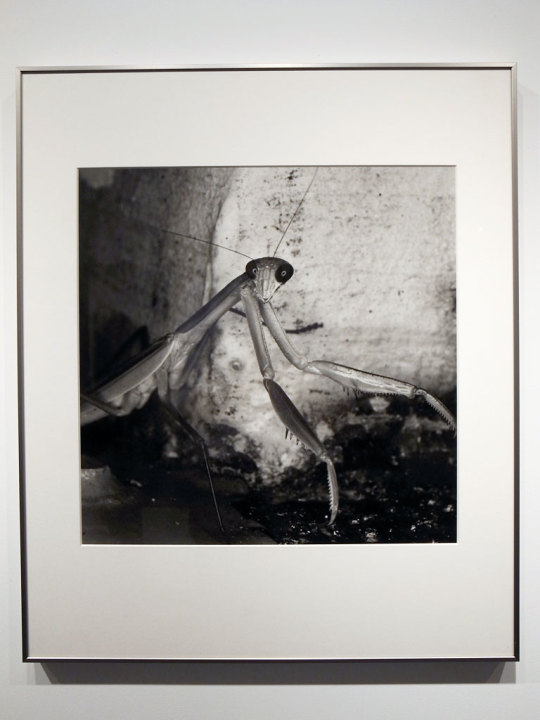


Seen: Tokyo Debugger 2019
Who: Shinya Arimoto / website
Where: Totem Pole Photo Gallery, Shinjuku
When: July 21 - August 2, 2020. Open 12 - 7pm, closed Mondays
Shinya Arimoto’s brilliantly titled “Tokyo Debugger” series is a collection of photographs taken in the wooded mountains west of Tokyo- a series of portraits of its natural denizens that, when wildly illuminated by his flash (and enlarged to 16x20 prints), assume a greater, more bizarre presence than one would think possible. There’s something about how the reflection of the ring his flash in these creatures’ eyes gives them a mysterious, unifying character- a spirit that’s closer to animism than biology.
Alone, these macro bug-portraits would be interesting enough but on his visits to these hills Arimoto also photographs the landscape itself- one often altered by man through mining and industry. In the shift in scale one finds reverberations of the insects’ micro-worlds in images of rusted construction equipment, scarred hills, and decrepit concrete structures in overgrown weeds. A Western viewer might try to interpret an ecological message- but looking carefully, there is none.
There is no “Good” or “Evil” in Arimoto’s work- not towards society nor individuals. Whether of rough-sleepers in Shinjuku or strip-mined hills, his work is unconcerned with set morals or predictable messages. He demonstrates a “fairness” (realness?) towards the world that focuses on what’s there rather than how it ought to be. His selection of “what’s there”, when printed and strung together, results in an impressive and individual view of the world- a bigger picture.
In this way, Tokyo Debugger is a continuation of Arimoto’s interest in how the camera bridges reality with photography- a line of interest in things as they are- and how photography affects/respects them- that can clearly be traced from the late 1990s on the plains of Tibet to the streets of Shinjuku and out into the forests of Okutama.
- - -
I keep thinking this is a “new” series but Arimoto has been exhibiting work from it since 2013. There was another show in 2014 at Totem Pole and a larger remix of the work at the Ginza Nikon Salon in 2015.
Also- keep in mind, all of these photos were taken with a Rolleiflex or Bronica SQ-B with Zenzanon-PS 110mm f4.5 lens and macro ring flash.
39 notes
·
View notes
Text
Hero Yandere VS Villain Yandere
Hello again! Today we’re going to be talking about a Hero yandere vs a Villainous one. I think this topic has been discussed before, but I mean we can always discuss it again! I’ll be taking note of @thatyanderecritic‘s posts on Selfless Yanderes Vs. Selfless Yanderes and the discussion of yanderes from @violetosprey and @thatyanderecritic’s Redeemable Yanderes, so if you haven’t read that, you might wanna at least skim it so you know what I’m talking about during certain points.
Before I go on, I want to clarify what I mean by a Hero and a Villain yandere. A “Hero” yandere is not necessarily a protagonist character and a “villain” yandere isn’t necessarily the antagonist. In general, a hero yandere is one that the story wants you to root for while a villain yandere is one that the story wants you to be against. For instance, a hero yandere is a character like Onyu from Metronome or a character like Satō Matsuzaka from Sugar Life. In general, these are characters, who, while definitely not the most moral of characters, are ones that we root for. Meanwhile, a villian yandere is a character like Mandarin Kim from Cherry Boy, That Girl or Kish from Tokyo Mew Mew. Of course, it doesn’t mean that villian yanderes can’t be rooted for, it just means that they are rooted against in the story.
So first, let’s talk about Hero Yanderes. According to u/Thenamesevan Writing Yandere Characters: Part Three - Heroic/Romantic Yanderes, “A heroic/romantic yandere stands a pretty good chance of having a legitimately happy ending with their beloved.” and “A crucial part of writing a heroic yandere is that, unlike the other two mentioned, there must be a greater threat to our protagonist than this character.” I think both of these tend to be pretty true if you’re writing a yandere that is the hero of the story. Unless the yandere either sacrifices themselves for their loved one or somehow dies suddenly in the story, the yandere hero tends to have a good ending with their loved one.
The second part deserves its own paragraph because I’m going to talk about this a lot more. If you think back to a lot of the different types of hero yanderes, the reason why we root for them is because the yandere is the best case scenario for the s/o. While the s/o may not like being with the yandere, as compared to possible other outcomes for the s/o, being with the yandere is the best case of survival. For instance in the case of Onyu and Satō, the greater threat for Onyu is the “curse” that is on Yuna and for Satō the outside world (mainly people who might take away Shio) from Shio. For Onyu’s case, the threat of this “curse” means that Yuna would die, and because Yuna is our main protagonist, plus the fact that the other people who are trying to get Yuna would most likely hurt her either physically or mentally (from what I can remember), thus we will root for him. In the case of Satō, while we could possibly be rooting for another character in the series, we root for her because in this scenario Satō is the best case scenario for Shio, in that she gives her a lot of love and provides a good household for her. The reason why a lot of cases tend to be “yandere vs outside forces” is because generally yanderes aren’t built to be heroic characters. Yanderes are written usually to characters that are two-faced and malicious and have a one track mind for their s/o. Usually the term “love-sick” isn’t one that you would correlate to a heroic type. So to make them a more “heroic” character, usually you’d have to have something worse that you would have to fight against. Usually in this case, the s/o has to deal with really terrible circumstances and the only way they can come out alive is if they team up with the yandere. Sometimes the s/o doesn’t even know that the character they team up with is a yandere, like in the case of Worldend: Debugger, where the s/o doesn’t know that the yandere is a yandere, yet we still root for the both of them because of the scenario they are in.
Now, of course a heroic yandere doesn’t necessarily have to team up with the s/o. In some cases, we would root for the yandere and not for their s/o to win. For instance if the s/o were a extremely evil person, like a mafia member or serial killer and the yandere wants to keep the s/o for themselves by locking them up in their house. While both of these actions are evil, if the yandere is written correctly, we could make the yandere a more heroic yandere type. For instance, if the s/o was a sort of demon that brought humans into an apocalyptic downfall. The yandere, for one reason or another, wishes to stay with the s/o forever by caging them underground so they would be with them forever. Along the way, the yandere is met with human resistance who want to bring the world back to what is was. Meanwhile, the s/o demon wishes to snuff out every last human so that they can take over the world. This scenario also encompasses the “best case scenario” as I’ve put it before. While the yandere is in the wrong for wanting to kidnap their s/o forever against their will, the s/o is a much worse scenario, especially if they completely wipe out the human race and cause the world into ruin. We would root for the yandere in this scenario because they are the “better case” as compared to what would happen if they didn’t.
This doesn’t really have to be a life or death situation either. This can also be shown in a shoujo manga for example. Hananoi kun to koi no yamai’s Hananoi, Miniamaru Kareshi’s Kusakabe and even Koharu no hibi’s Koharu. In many of these cases, the “yandere” in question is considered good, even if they are strange or obsessive. While generally it can be difficult to have a male yandere “heroic” character in a shojou (since shojous tends to be focused on more slice of life activities and romantic aspects, and hopefully murdering people isn’t part of your normal day activities), that again, doesn’t mean its impossible. However, we might still need to consider the “best case scenario” if you want to keep some of the darker actions of a yandere. For instance, a shoujo about a girl who has a really bad time with dating since all of the people she dates suddenly break up with them. She always gets comforted by a friend who always has the best interest in mind for her. As it turns out this friend is the cause of all of the break ups. However, the reason why the friend forces breakup on all of the guys she dates isn’t simply because he’s in love with the girl, but also because all of the guys she dates want to use her for money or other things. It becomes this friend’s goal get rid of all the people she dates as none of them want an actual relationship with her. In this case, we would root for this yandere as he is a “heroic type” and is trying to get rid of the people she dates to help her in her well being.
Or perhaps we can turn to redeemed yanderes. See, told you that link on top was semi important! Anyways, redeemed yanderes are basically yanderes that give up their yandere ways, either by having a loving healthy relationship with their loved ones or giving them up so they can be happy. Generally, this is also another case of a “heroic yandere”. In this case, it really is the best scenario as in this case they’ve “outgrown” their yandere phase and will have a happy (or relatively happy) relationship with their s/o. Usually this means that the yandere has a redemption arc and probably has done something bad before having this redemption. In general, these tend to be more difficult to write, but have better characterizations than, say, a yandere from a oneshot. I’m not going to go super deep into them right now, since that’s a topic that other people have gone through already and it would make this way more longer than it already is ( perhaps a future post) but I will say that it can be and is probably is the best kind of heroic yandere.
Now that I’ve had my long discussion on heroic yanderes, we’re going to turn to the villianous ones instead. Now again, villianous yanderes are ones that the story wants us to be against. Now, that doesn’t mean that they aren’t well written or sympathetic. For instance, Madarin Kim, while not redeemable nor agreeable in his actions, has understandable reasons why he is like the way he is. His clinginess and obsessiveness of Strawberry come from his neglect from his parents, and leaves him extremely scared of people trying to leave him. In many cases, villain yanderes are considered villains because they go against the s/o, and often they tend to be extremely selfish and manipulative. In a lot of cases, these characters tend to be morally in the wrong, and if they are one shot yandere villains, either reform or die in the part that they were in. Villain yanderes tend to not have much character development, and their motives and reasons for falling in love with the s/o tend to be misplaced. Usually the reason they’re attached to their s/o is related to their past, usually neglect tends to be the main reason, but it can also be other things like being reborn, having a condition, really a lot of things. Their actions for trying to be with their s/o are often pretty malicious. If it’s not something like murdering people, they might do something such as brainwashing, manipulating blackmailing or really any other kind of means to get with their s/o.In many cases, these yanderes tend to be very two faced, having a softer/ other personality and then their yandere one. In many instances, the s/o and even the audience doesn’t know that these yanderes are villains until later on in the story. A yandere’s characterization is usually aligned with a villainous character anyways, thus it makes perfect sense that yanderes end up in villain like role in one way or another.
However, the villain yandere might not be really considered a “villain” at all. The only real requirement of a villain yandere is one that the story wants you to root against or the s/o is trying to go against. This means that morally, the villain yandere might not be much of a villain and may resemble more of a hero. This can be a bit difficult to pull off as like I’ve said before, yanderes tend to end up in a villain like role and are usually more malicious than good. But in this kind of situation, it usually means that the s/o would be more morally in the wrong. If you mix this up with a good premise/ goal, then this story would work.
For instance, an example would be a story about a delinquent girl in a gang and a yandere police officer trying to stop her. The delinquent girl and her gang are constantly beating up people to a pulp and destroying property and the police officer is trying to stop her. Perhaps the officer is trying to convince the delinquent girl to live with him and become reformed in the hopes that she will date him. He could have yandere tendencies like attempting to stalk her so she doesn’t get hurt or arresting/shooting people that might destroy her future or might hurt her and are considered dangerous criminals. The delinquent girl then perhaps doesn’t want to be with the police officer because perhaps she doesn’t believe in the police force and is trying to reform it, or perhaps must find a younger sister or a special item that can only be created through violence. In this scenario, we would see the police officer isn’t morally in the wrong after all, he is still doing justice for the city, but we would also see why we would be against the police officer, as it would mean that the delinquent might not achieve her goals. We could also make the delinquent more sympathetic and the police officer more morally gray if we wanted to round their characters out more. For instance if the delinquent made a promise with their parents to take care of her sister and the police officers goal of “getting rid of crime in the city” was based off of something in their past that they couldn’t go against and were willing to become more violent and ruthless to get rid of them, thus them trying to turn the delinquent into a more harmless person.
Anyways, I hope you like this post! If you have anything else you’d like me to analyze for yanderes please tell me.
78 notes
·
View notes
Text
Top 10 Mobile App Development Companies in Japan
Looking for a mobile app development company in Japan but you don’t know which one to hire? As these types of applications have a huge role to play in your business, you need to be sure that you are making the right decision. Here is a list of the top 10 mobile app development companies in Japan:
Monaca
Monaca is responsible for popularizing PhoneGap framework in Japan in 2009. The company developed Monaca Debugger and Cloud IDE, before going on to create their popular Onsen framework for frontend applications. Thanks to their contributions it i one of the most comprehensive hybrid mobile app development tools available on cloud to their clients. With customers all over the world, you can expect exceptional services from Monaca.
Monaca has another triumph to add to its list of achievements. The company featured in RobustTechHouse’s list of top 10 mobile app development companies in Japan!
Monstar Lab
One area where Monstar Lab shines is in mobile app development and planning. When you are looking to create an app to meet your business needs, you can always rely on Monstar Lab. The company has extensive expertise in this field, giving them a huge advantage over their competitors. As they can develop the right apps for a variety of industries, choosing Monstar Lab the best decisions your company can make.
Monstar Lab has another triumph to add to its list of achievements. The company featured in RobustTechHouse’s list of top 10 mobile app development companies in Japan!
Neopa
A mobile app development company from Tokyo, you can always rely on Neopa to deliver exceptional solutions. The business strongly believes in developing high-performing applications, which provide optimal experience to users. Irrespective of your demands, Neopa has the right tools and expertise at their disposal.
Neopa has another triumph to add to its list of achievements. The company featured in RobustTechHouse’s list of top 10 mobile app development companies in Japan!
Qburst
If you want your business to make the most of mobile technology, getting in touch with Qburst is the right decision. Thanks to their expertise in this field, they have all the solutions to make you succeed in any competitive environment. With sound strategies, the company will develop apps which provide an immersive experience to all your users. You can always depend on Qburst, regardless of your needs.
Qburst has another triumph to add to its list of achievements. The company featured in RobustTechHouse’s list of top 10 mobile app development companies in Japan!
Rain Interactive
When you hire the services of Rain Interactive, you can sit back and relax, as they go out of their way to bring your idea to life. Despite the changes in the digital landscape, Rain Interactive continues to keep itself up-to-date with all the developments. As a result, the solutions provided by the company are second to none, in the mobile app development industry.
Rain Interactive has another triumph to add to its list of achievements. The company featured in RobustTechHouse’s list of top 10 mobile app development companies in Japan!
Simplifica Software
If you want a successful native mobile app which helps meet one of the many goals of your business, get in touch with Simplifica Software immediately. Thanks to the team of dedicated and expert developers, you will only get the best solutions in the industry. With their help, you can optimize a large number of your operations and take efficiency to a whole new level.
Simplifica Software has another triumph to add to its list of achievements. The company featured in RobustTechHouse’s list of top 10 mobile app development companies in Japan!
Sysamic
When you search in Japan for mobile app development, you can never afford to ignore Sysamic, one of the leaders in the industry. Due to immense experience in developing apps in property investment, insurance, banking, and healthcare, Sysamic’s solutions are remarkable. Throughout every stage of mobile app development, the company will remain transparent of their progress.
Sysamic has another triumph to add to its list of achievements. The company featured in RobustTechHouse’s list of top 10 mobile app development companies in Japan!
Tacchi Studios
Tacchi Studios makes it a point to use only the latest designs and technology, to ensure their clients continue to use their services. They work with startups and brands, as it is their aim to provide the best experience. You can expand the reach of your business, thanks to their multilingual support. They spend adequate time in research, to make sure your mobile app makes a huge positive impact on your users.
Tacchi Studios has another triumph to add to its list of achievements. The company featured in RobustTechHouse’s list of top 10 mobile app development companies in Japan!
Wizcorp
A mobile app development company from Tokyo, the company has significant amounts of experience in the industry. Although the company specializes in games, they are experts in native and hybrid moile apps. Their team of developers know how to build high-performing applications, which provide an exceptional experience to their users.
Wizcorp has another triumph to add to its list of achievements. The company featured in RobustTechHouse’s list of top 10 mobile app development companies in Japan!
YumyApps
With its headquarters in Japan, YumyApps knows the importance of delivering high-quality products to their clients. The company knows how to develop flexible solutions, which is always capable of meeting your requirements. They are well-known for creating beautiful looking mobile applications, which perform well at the same time.
YumyApps has another triumph to add to its list of achievements. The company featured in RobustTechHouse’s list of top 10 mobile app development companies in Japan!
Img Source: https://pixabay.com/en/woman-face-thoughts-media-head-1446557/
Top 10 Mobile App Development Companies in Japan was originally published on RobustTechHouse - Mobile App Development Singapore
0 notes



